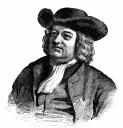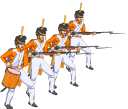The Making of the 50 States: Pennsylvania
Part 1: In the Beginning Pennsylvania was the second state to ratify the Constitution. The state has a long and rich history of support for independence and religious toleration. Before European settlers moved to the area, Native Americans lived there. Among the tribes were the Delaware and the Susquehannock (whom Englishman John Smith visited in 1608). From the early 1600s, the Pennsylvania territory was disputed territory. People from Holland, Sweden, and England all claimed titles to land in what we now call Pennsylvania. The Swedes were the first European power to make a permanent settlement in present-day Pennsylvania. In 1643 Governor Johan Printz of New Sweden established his capital at Tinicum Island within the present limits of Pennsylvania. The Dutch had trading posts in the area, and fighting broke out between Holland and Sweden eventually. England was also the author of a trading post network, and England won in 1664, capturing New York and Pennsylvania both.
Penn was a member of the Society of Friends, or Quakers. Many people in England didn't like the Quakers and wanted them to leave (much like the Pilgrims had to leave a few years earlier). He brought many Quakers with him to the new territory of Pennsylvania, and they lived in religious freedom there. Penn began buying land from the Native Americans who lived to the west, and the current borders began to take shape. Settlers from Germany and France also came to Pennsylvania. In fact, France claimed the western part of what is today the state of Pennsylvania. Many Dutch and Swedes still lived there, too. And despite the Quakers' opposition to slavery, African-American slaves were brought into Pennsylvania to work for non-Quakers.
|
|
Social Studies for Kids
copyright 2002–2024
David White



 It
wasn't until 1681 that Pennsylvania got its name. England's
It
wasn't until 1681 that Pennsylvania got its name. England's
 With
French claims in the west and English claims in the east, it
was probably inevitable that the two cultures would clash.
They took up arms against each other in the
With
French claims in the west and English claims in the east, it
was probably inevitable that the two cultures would clash.
They took up arms against each other in the 
